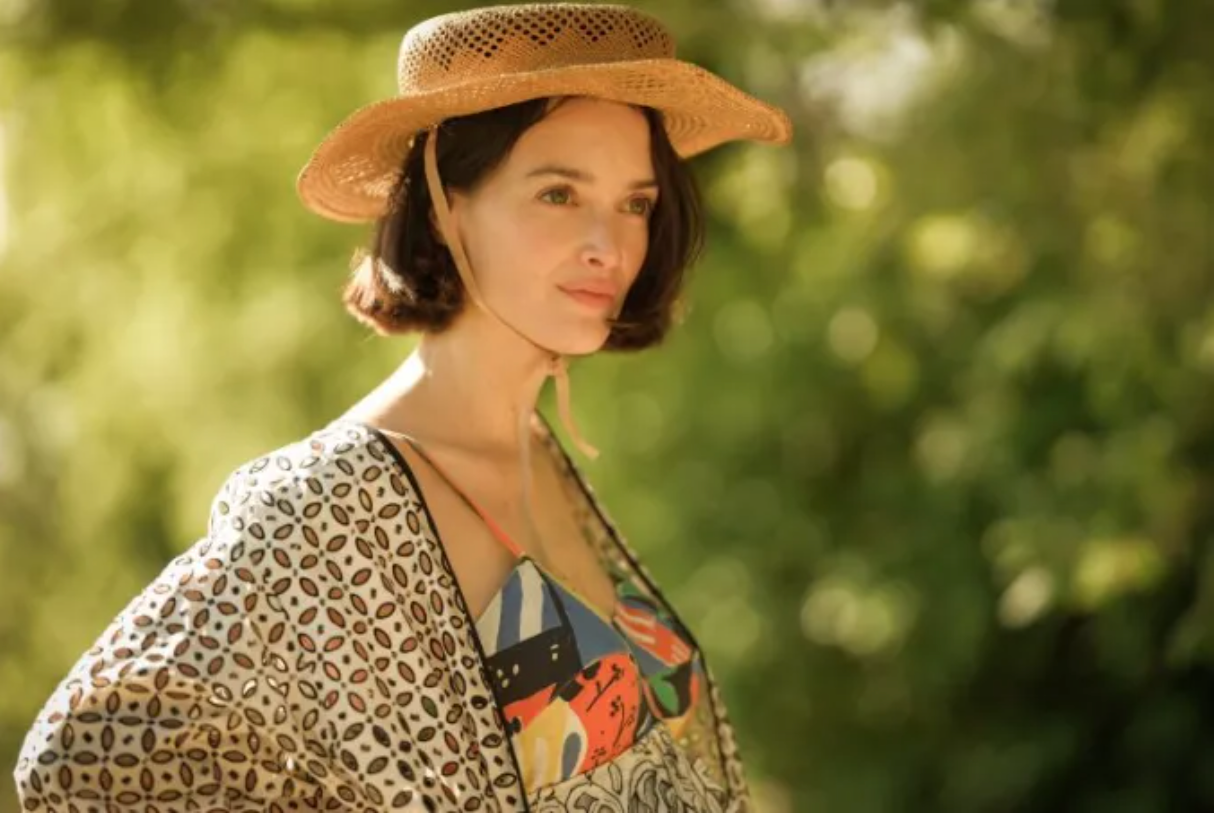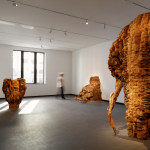
It is an ongoing mystery why so many artists』 biopics, though undoubtedly coming from a place of deep admiration, choose to ignore the very thing that makes their subjects extraordinary—their art—in favor of outlining the less extraordinary (however torrid) circumstances of their private lives and loves. The latest example: the attractive but slight directorial debut of French actress Céline Sallette (House of Tolerance, 2011, Rust and Bone, 2012). Her feature, Niki, is a portrait of pioneering French American painter, sculptor, and illustrator Niki de Saint Phalle, in which the most we ever see of her actual oeuvre is the back of a canvas or two, as Niki (Charlotte Le Bon), spattered with paint that highlights her delicate elf-princess beauty, frowns at her efforts in dissatisfaction. Exactly what is she looking at? Unless you』re intimately acquainted with every phase of her multivalent career and can navigate the film』s rather haphazard chronology, there is no way to know.
De Saint Phalle was indeed a very beautiful woman who, as the movie begins in the early 1950s, is posing for a magazine fashion shoot—an early showcase for Marion Moulès and Matthieu Camblor』s consistently covetable costume design. Mute, pliable, and immaculately made up, with a tiara glistening in her hair, Niki has her photo taken just before a bulb blows and the studio plunges into darkness. 「What』s her name again?」 mutters the unseen photographer to his assistant. 「I don』t remember,」 is the offhand reply, which could ironically foreshadow Niki』s eventual fame if it didn』t occur in a film that is also curiously unwilling to refer to the woman by her full name.
Niki snaps off her borrowed jewels, signs her payment slip, and rushes back to the small Paris apartment she shares with her dashing husband, Harry (John Robinson), and their infant daughter, who promptly soils the bedspread on which she is plunked down. When Harry gets home, he is affectionately exasperated to discover that Niki, in a hurry to get to rehearsals for her Cocteau stage production, has simply wrapped the dirty coverlet around the kid』s midriff in lieu of a fresh diaper. This is how we know that Niki is a free spirit with an archly nontraditional approach to motherhood, and to life.
The young family moved to Paris from the United States, a decision they claim was made to get away from McCarthyism, racism, possible nuclear attacks, and Harry』s mother. But despite their free-thinking, progressive leanings and bohemian lifestyle, Niki is assailed by symbolism-heavy flashbacks to a repressed childhood trauma: lurid sequences rendered in an oversaturated palette to differentiate them from the tasteful, sunny arrangements of director of photography Victor Seguin』s other scenes. Niki』s panic attacks become more frequent, and when Harry discovers the stash of knives that she has taken to compulsively hiding under their shared mattress, Niki allows herself to be committed to an institution where they treat her with barbaric doses of electroshock therapy.
But it』s also there that Niki discovers the therapeutic benefits of creative expression. Once released, she throws herself into painting as an outlet for her still-unresolved neuroses. She does less acting, breezily turning down the lead role in a Robert Bresson film, and devotes herself to developing her naive but forceful visual style, along the way becoming close to Swiss sculptor Jean Tinguely (a soft lovely turn from Damien Bonnard) and his first wife, Eva (Judith Chemla). That Niki would go on, after several affairs, to split from Harry and become Tinguely』s second wife—and for a time, the French-art-world Bonnie to his Clyde—is, rather amazingly, outside the frame of Sallette』s film: it concludes on a note of artistic self-fulfillment to which Sallette and cowriter Samuel Doux』s screenplay has done little to build.
Without including Niki』s artwork (an absence that rather unfortunately recalls the 30 Rock gag in which an unlicensed Janis Joplin biopic is barred from using any of Joplin』s songs and has to give its heroine a different name), we are left to guess at the results when Niki pulls a doll』s head from its body for use in some offscreen found-object collage, or when she describes to Tinguely her idea for firing a gun at a canvas loaded with paint squibs. The latter was the stunt that established the real de Saint Phalle as a member of a new, rebellious avant-garde; it』s a shame that Sallette』s film, ultimately conventional despite some stylish split-screen and Le Bon』s intricate performance, couldn』t have drawn just a little inspiration from the same spirit of iconoclasm.
